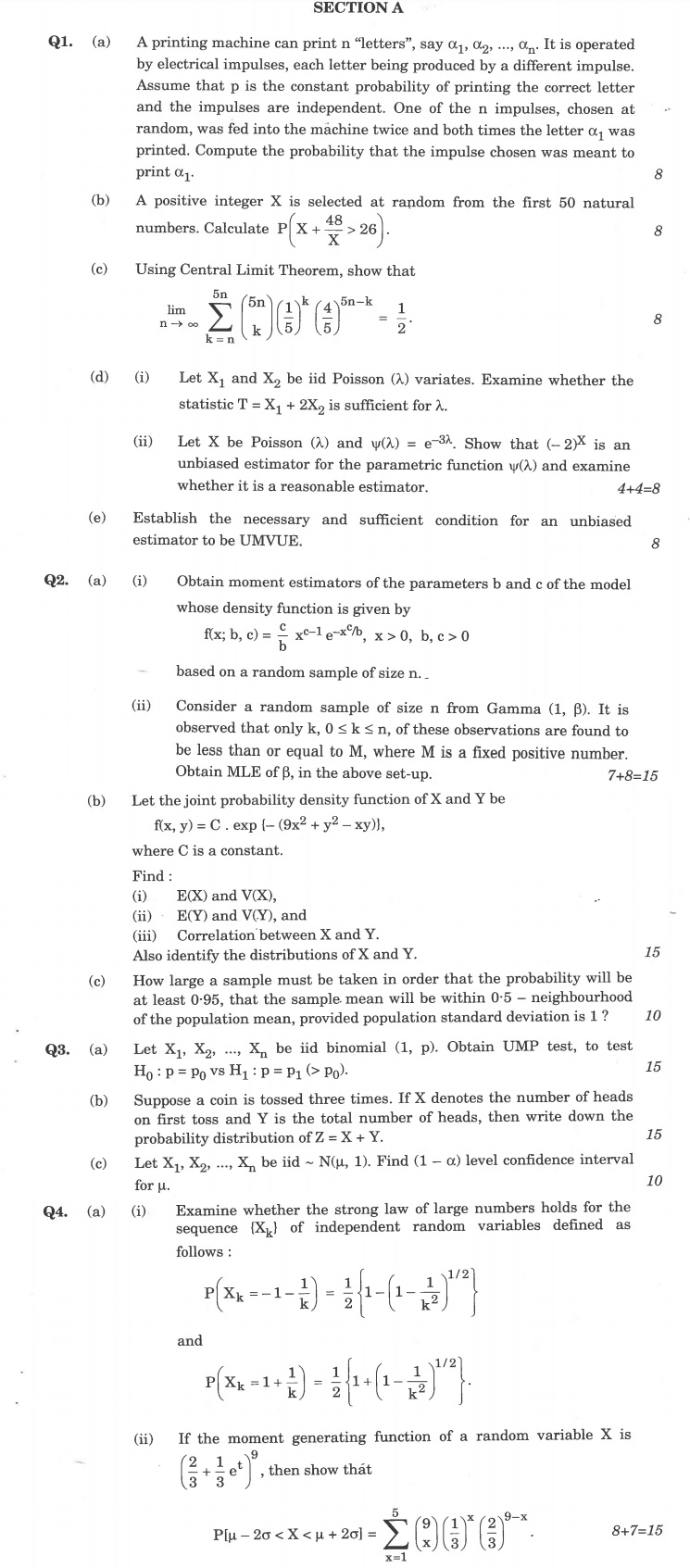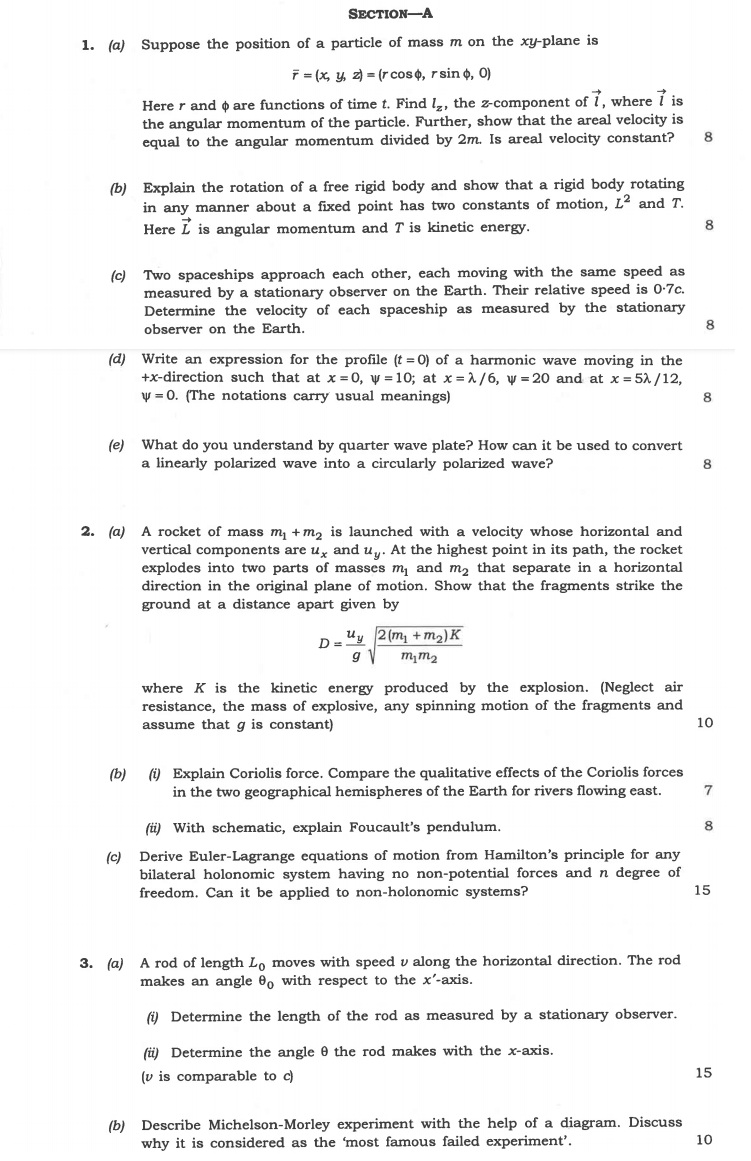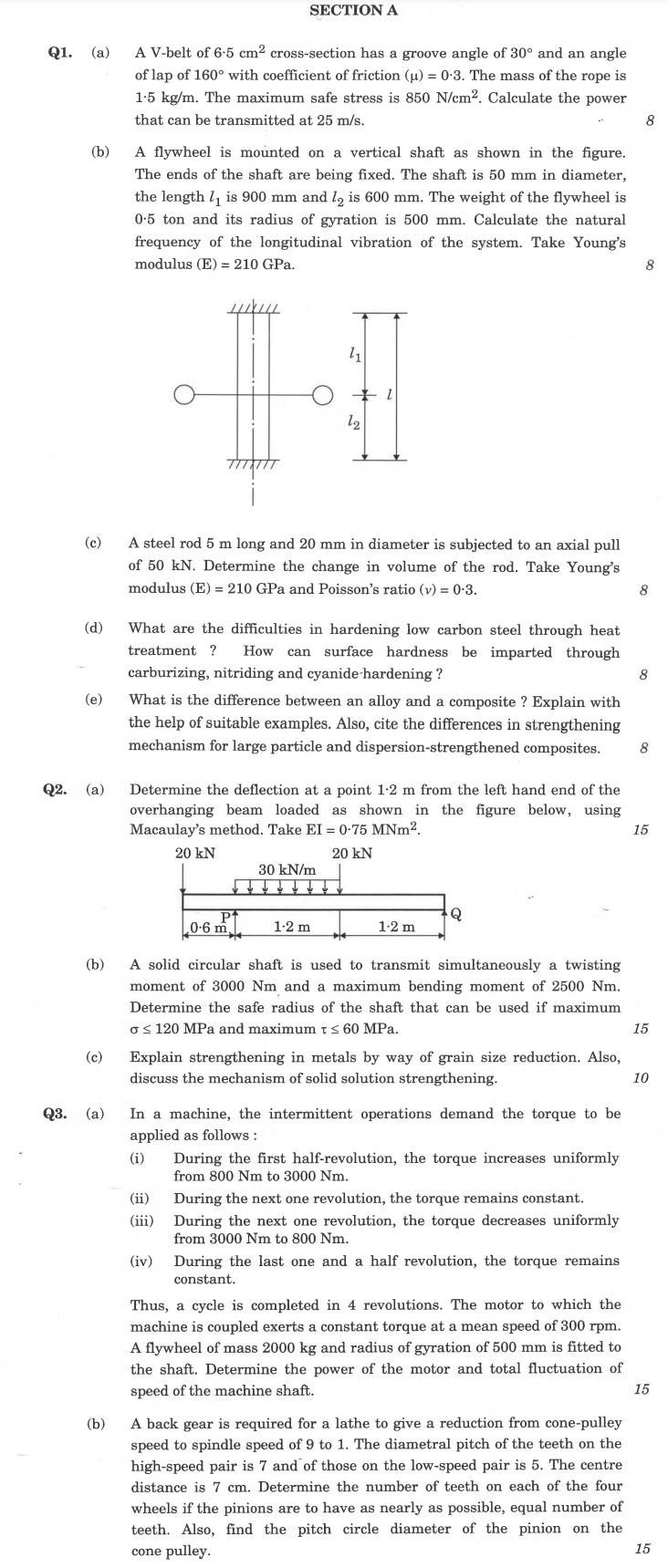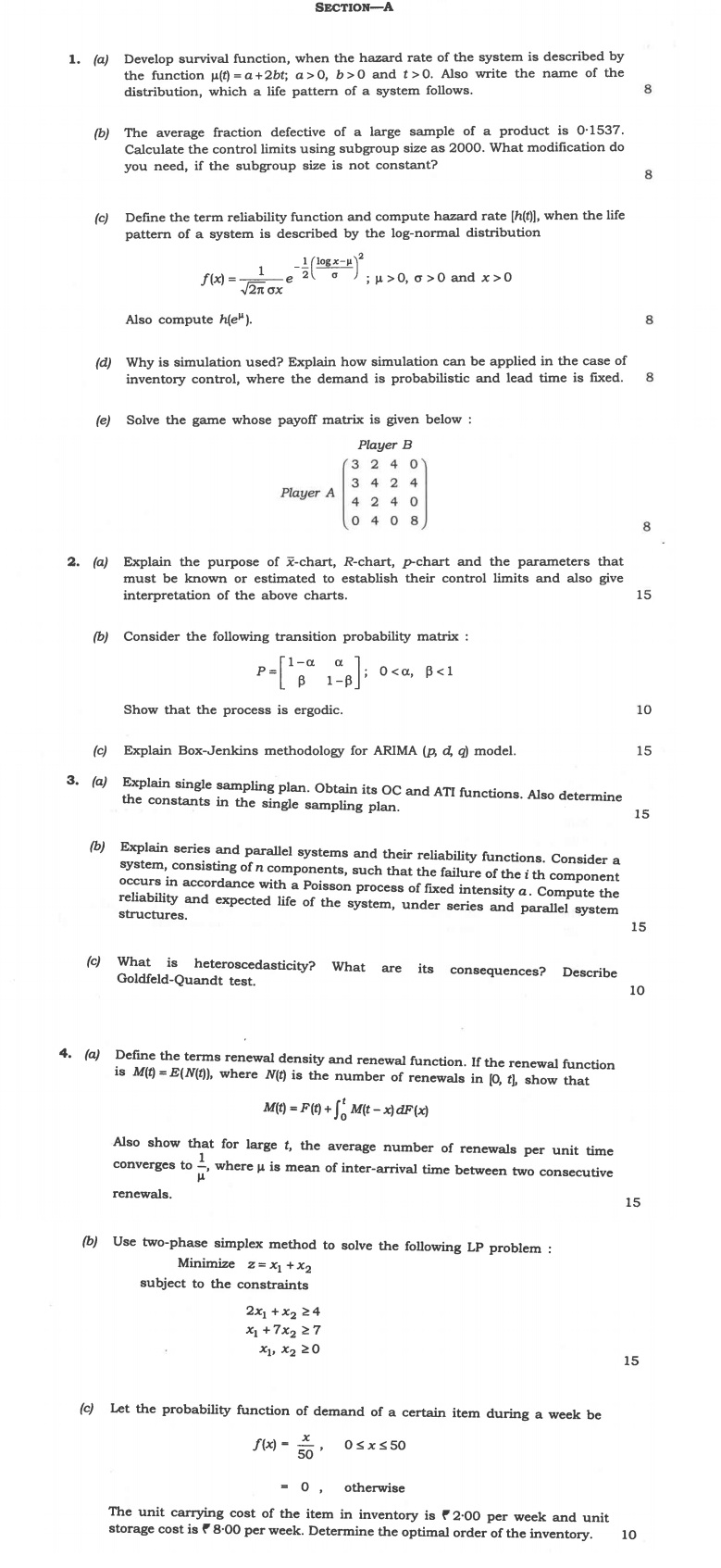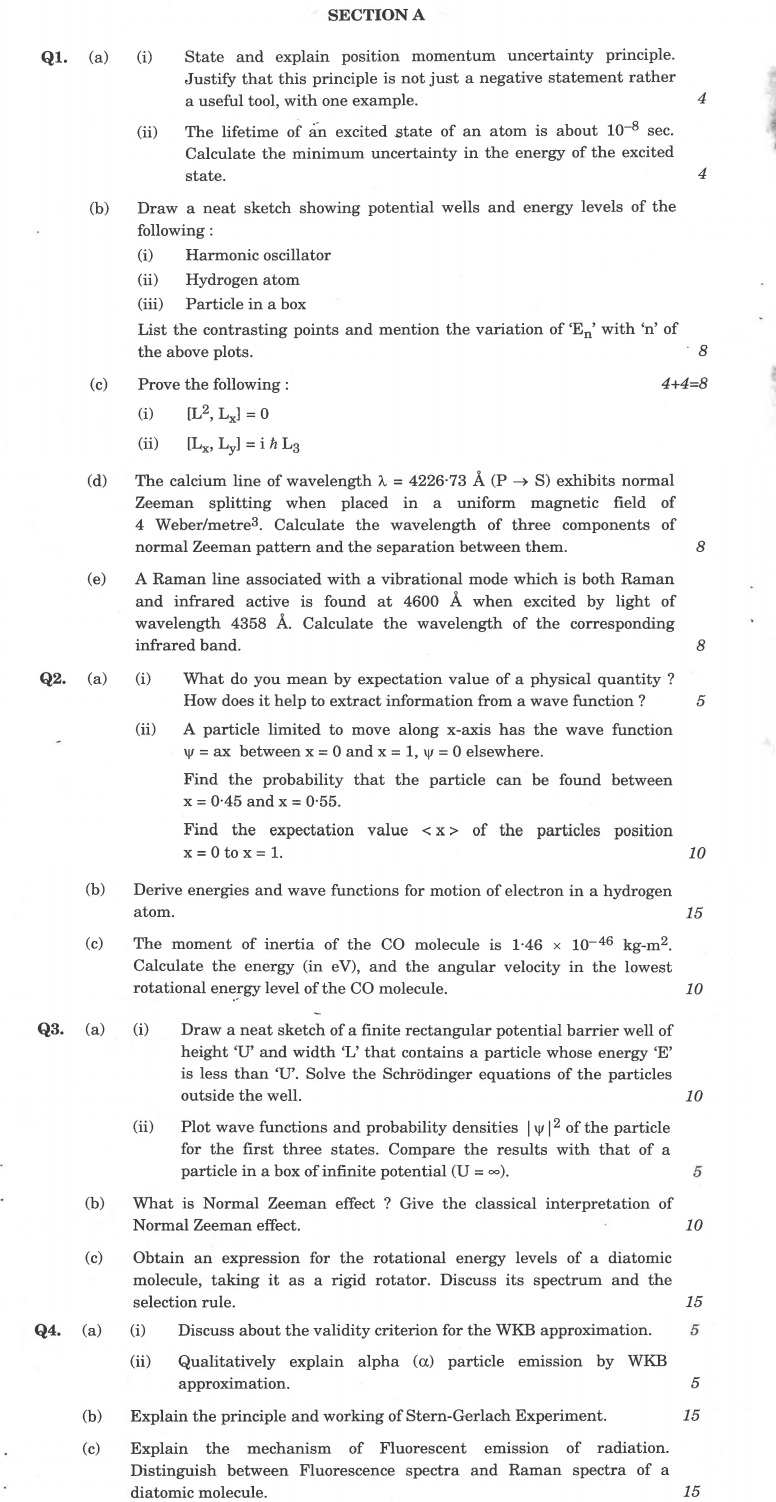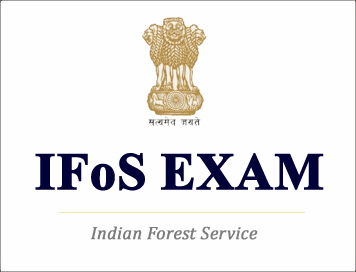
(Download) UPSC IFoS (Main) Exam Paper-2020 "General Knowledge"
Exam Name: IFoS (Main) Exam
Exam Year: 2020
Subject: "General Knowledge"
'SECTION-A'
Q1. (a) Enumerate the multiple aspects of the Mauryan Period that make it a time of great historical interest. (200 words)
(b) Describe the administrative and cultural features of the Chola Empire. (200 words)
(c) To what extent can Aurangzeb be held responsible for the decline of the Mughal Empire ? (125 words)
(d) Analyse the Popular Revolt of 1857 as India's First War of Independence. (125 words)
Q2. (a) Examine the view that economic growth of India remains subdued and uncertain due to the outbreak of COVID-19 pandemic. Explain the need for supportive monetary policy and strong public investment for a swift economic revival. (200 words)
(b) Elucidate the implications of climate change for fresh water resources in India. Does demand side management through appropriate behavioural nudges increase end-use efficiency of water ? Discuss. (200 words)
(c) 'Financial inclusion is emerging as the new paradigm of economic growth.' In the light of the given statement, discuss the importance of digital technology in furthering the cause of financial inclusion. (125 words)
(d) What are the different types of non-timber forest products ? Describe the importance of non-timber forest products in ensuring livelihood and food security. (125 words)
Q3. (a) Can Directive Principles be best understood as providing the framework of values that structure and constrain the interpretation and construction of Fundamental Rights as enshrined in the Constitution of India ? Explain. (200 words)
(b) "The Indian federal model emerged out of, and has been sustained by, an understanding that only a strong union can keep the country together and is necessary in the conditions in which our Constitution is operating.' Comment. (200 words)
(c) What are the grounds for disqualification of Members of Parliament, State Legislative Assembly or State Legislative Council under the Constitution (Fifty-second) Amendment Act ? On what basis is the anti-defection provision critiqued ? (125 words)
(d) Presidents and Governors enjoy discretionary situations. What are these situations ? (125 words)
Q4. (a) Explain the shrinkage of the Greenland Ice-sheet due to the impact of global warming and atmospheric circulation patterns. (200 words)
(b) Explain the causes and impact of the bushfires in Australia which occurred in 2019 – 2020. (200 words)
(c) “Cultivation and the way of life are intimately linked with the concept of cultural and natural landscapes.” Elaborate with examples. (125 words)
(d) Briefly explain the physiological, agricultural and population densities of India. How are they different from each other ? (125 words)
Q5. (a) Describe Eco-Sensitive Zones (ESZ's) or Ecologically Fragile Areas (EFA's). What is the statutory backing for them ? What were the controversies encircling ESZ’s/EFA's ? In what ways do community reserves differ from ESZ's/EFA's ? (200 words)
(b) Explain organellar genome. Can this be connected to endosymbiotic theory ? Why are organellar genomes proposed as candidates for transgene containment, a concern in GM crops ? (200 words)
(c) What are the different uses of nanotechnology in agriculture ? Name some prominent nanoparticles used for specific purposes in agriculture and mention their advantages. (125 words)
(d) Describe three model organisms, out of which one is a plant. What are the advantages of using model organisms in research ? What are the specialities of their genomes ? (125 words)
Q6. (a) What is GPS ? How does it work? What are the minimum number of satellites required for a GPS and why ? (200 words)
(b) What does MRI stand for? What is the physics behind this technique ? What are the advantages of MRI over other radio-diagnostic techniques such as X-ray and CT scan ? (125 words)
(c) What do you understand by Hydrogen Energy ? Why is it called as 'green' energy ? Explain fuel cell technology for using hydrogen as a fuel. (200 words)
(d) Recently the LHC (Large Hadron Collider) was in the news. Write briefly about it. Why are Higgs bosons so important for science ? (125 words)




